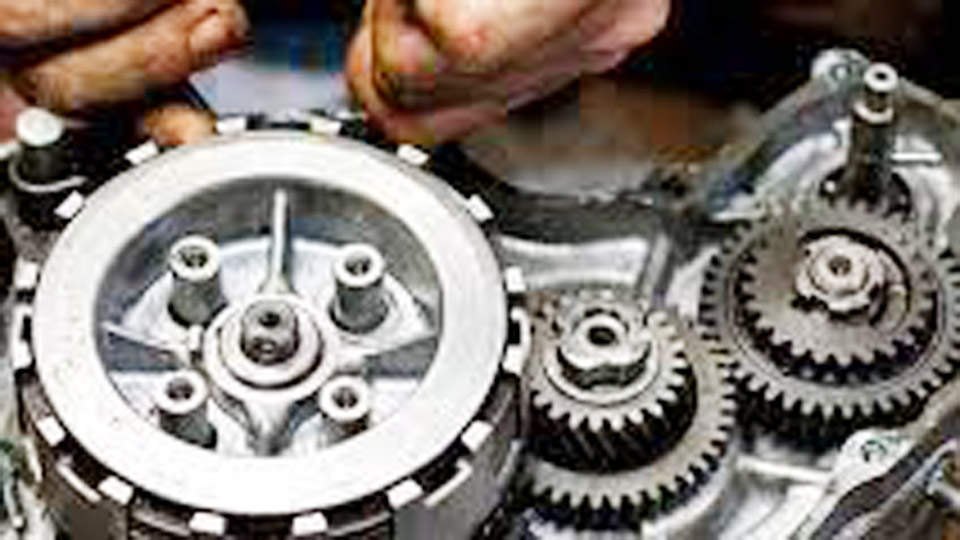How to Fix an Over-Revving Car?
You’re sitting at a red light, foot off the gas, but your engine’s roaring like you’re flooring it. The RPM gauge is climbing, and your car sounds like it’s ready to take off without you. That’s exactly what happened to me in my 2005 Chevy Silverado a couple of years ago. It was embarrassing and a little scary, especially with other drivers staring. An over-revving car isn’t just annoying—it can hurt your engine and your wallet if you don’t fix it.

Photo by carloversautomotive
I’ve dealt with this issue on my truck, helped a buddy with his Honda Civic, and even tackled it on a neighbor’s old Ford. I’m here to share what I’ve learned about why cars over-rev, how to diagnose the problem, and how to fix it. Whether you’re a DIY newbie or a seasoned gearhead, this guide will help you get your car’s engine back to normal.
What Does Over-Revving Mean?
Over-revving is when your car’s engine runs at higher RPMs (revolutions per minute) than it should for the situation. Normally, an engine idles at 600–1,000 RPM when you’re stopped, and RPMs rise smoothly when you accelerate. But when it over-revs, the RPMs spike without you touching the gas, or they stay high when you let off.
I noticed my Chevy’s RPMs hit 2,000 at idle, way above normal. It can happen when idling, driving, or even shifting gears in a manual car. Over-revving stresses the engine, burns more fuel, and can lead to serious damage if ignored. Knowing what it feels like helps you catch it early.
Why Does a Car Over-Rev?
I’ve seen over-revving caused by a bunch of different issues, and figuring out the culprit is the first step to fixing it. Here’s what I’ve found causes it, based on my experience:
Throttle Body Issues: The throttle body controls airflow to the engine. If it’s dirty or stuck, it can let in too much air, raising RPMs. This was the problem with my Chevy.
Vacuum Leaks: Cracked hoses or loose connections let extra air into the engine, causing high RPMs. I found a leaky hose on a friend’s Civic.
Faulty Idle Air Control Valve (IACV): The IACV regulates idle speed. If it’s bad, the engine can race. I replaced one on a Ford that was over-revving.
Sticking Throttle Cable: In older cars, a stuck cable keeps the throttle open. I saw this in a neighbor’s classic Mustang.
Bad Mass Airflow Sensor (MAF): A faulty MAF sends wrong data to the engine computer, messing up air-fuel mix and RPMs. This happened to a buddy’s Toyota.
Electronic Throttle Control Problems: Modern cars use electronic throttles. A glitch in the system can cause over-revving. I’ve seen this in newer Hondas.
Transmission Issues: Slipping clutches or torque converters can make the engine rev high without power to the wheels. I helped diagnose this on a Dodge.
Driver Error (Manual Cars): In stick shifts, missing a gear or slipping the clutch can over-rev. I did this once learning to drive a manual.
Each cause needs a different fix, so diagnosing the problem is key. I start with simple checks before diving into complex ones.
Symptoms of an Over-Revving Car
When my Chevy started over-revving, it wasn’t just the high RPMs that tipped me off. Here are the signs I look for, based on my experience:
- High Idle RPMs: The engine idles above 1,000 RPM, often 1,500–3,000. My Chevy hit 2,000 at stoplights.
- Racing When Stopped: RPMs spike randomly when you’re not touching the gas. I felt this in my truck at idle.
- Lurching or Surging: The car feels like it wants to move forward on its own. A friend’s Civic surged at red lights.
- High RPMs While Driving: RPMs stay high even when you ease off the gas. I noticed this in a Ford during a test drive.
- Poor Fuel Economy: Over-revving burns extra gas. My Chevy’s mileage dropped before I fixed it.
- Engine Noise: The engine sounds loud and strained, like it’s working too hard. My truck roared like a racecar.
- Check Engine Light: Some issues trigger a warning light. My buddy’s Toyota had this with a bad MAF sensor.
If you notice these, don’t wait to check it out. I ignored my Chevy’s symptoms for a week, and it started stalling too.
Tools and Materials You’ll Need
Fixing an over-revving car doesn’t always need a full toolbox, but having the right gear helps. Here’s what I keep handy, based on my repairs:
- Screwdrivers: Flathead and Phillips for removing hoses or sensors. I use a multi-tip set.
- Wrench Set: For bolts on the throttle body or IACV. A 10mm wrench fits most.
- OBD2 Scanner: To read trouble codes. My $30 scanner saved me time on my Chevy.
- Throttle Body Cleaner: To clean gunk off the throttle body. I use CRC cleaner for $8.
- Vacuum Hose or Tape: To patch leaks temporarily. I keep a $5 roll of hose tape.
- MAF Sensor Cleaner: For cleaning the sensor. A $7 can works great.
- Rags and Gloves: To keep things clean and protect your hands. I use nitrile gloves.
- Replacement Parts (Optional): IACV, MAF sensor, or throttle body if needed. I bought a $40 IACV for a Ford.
- Flashlight: To see in tight engine spots. My LED light is a lifesaver.
These tools cover most fixes. I store them in a bag for quick access when my engine acts up.
Step-by-Step Guide to Fixing an Over-Revving Car
Fixing an over-revving car starts with finding the cause. I’ve tackled this on a few vehicles, and here’s how I do it, based on my Chevy’s throttle body issue:
Step 1: Check for Trouble Codes
Plug an OBD2 scanner into the port under your dashboard. Turn the key to “on” and read any codes. My Chevy showed a P0507 code (high idle). Codes like P0122 (throttle) or P0102 (MAF) point to specific issues. Write down the codes and look them up in your manual or online. If there’s no light, move to visual checks. I always start here to save time.
Step 2: Inspect for Vacuum Leaks
Pop the hood and look for cracked or loose vacuum hoses. They’re usually black rubber tubes connected to the intake manifold. I found a split hose on my friend’s Civic by listening for a hissing sound. Spray soapy water on hoses—if it bubbles, you’ve got a leak. Patch small cracks with tape or replace the hose ($5–$15). I taped a leak temporarily and ordered a new hose.
Step 3: Clean the Throttle Body
A dirty throttle body was my Chevy’s problem. Remove the air intake tube (usually a clamp) to access it. Spray throttle body cleaner on the butterfly valve and wipe with a rag. I spent 10 minutes cleaning mine, and the RPMs dropped to normal. Don’t force the valve—it’s delicate. Reattach the tube and test the idle. This fixes many over-revving issues.
Step 4: Check the Idle Air Control Valve (IACV)
The IACV is usually on the throttle body, held by screws. Remove it and check for dirt or sticking. I cleaned a gunked-up IACV on a Ford with throttle cleaner, which fixed the high idle. If it’s faulty, replace it ($20–$100). Test by starting the car after cleaning. My Ford’s RPMs settled at 800 after this.
Step 5: Clean or Replace the Mass Airflow Sensor (MAF)
The MAF sensor is in the air intake, between the air filter and throttle body. Remove it (usually two screws) and spray with MAF cleaner. I cleaned my buddy’s Toyota MAF, and it stopped over-revving. If cleaning doesn’t help, replace it ($50–$150). A bad MAF was his issue, confirmed by a code.
Step 6: Inspect the Throttle Cable (Older Cars)
In older cars, a throttle cable connects the gas pedal to the throttle body. Check if it’s stuck or frayed. I lubed a sticky cable on a Mustang with WD-40, which fixed it. If it’s damaged, replace it ($10–$30). Most newer cars use electronic throttles, so skip this if yours is modern.
Step 7: Check Electronic Throttle Control
If your car has a drive-by-wire throttle, a sensor or module might be faulty. Reset the system by disconnecting the battery for 10 minutes. I tried this on a Honda, and it helped temporarily. If RPMs stay high, a mechanic needs to scan the throttle module. This is trickier, so I leave it to pros if the reset fails.
Step 8: Inspect the Transmission
For automatic cars, a slipping transmission can cause high RPMs without speed. Check fluid levels with the dipstick—low or dirty fluid is a clue. I topped off fluid in a Dodge, but it needed a shop for a slipping torque converter. Manuals may need clutch adjustment. I check fluid monthly to catch this early.
Step 9: Test Drive and Monitor
After each fix, start the car and check idle RPMs (should be 600–1,000). Drive slowly to see if RPMs behave. I test-drove my Chevy after cleaning the throttle body, and it was smooth. If it still over-revs, recheck your work or try the next step. I monitor for a week to ensure it’s fixed.
This process takes 30 minutes to a few hours, depending on the issue. My Chevy’s fix was a 15-minute throttle clean, but others took longer.
Common Problems and Fixes
I’ve hit a few bumps fixing over-revving cars. Here’s what to watch for, based on my repairs:
- Persistent High Idle: If cleaning doesn’t help, check for hidden vacuum leaks or a bad IACV. I missed a tiny hose crack once.
- Check Engine Light Returns: A new code might point to another issue. My Toyota needed a new MAF after cleaning failed.
- Sticky Throttle Valve: Overcleaning can damage it. I spray lightly and wipe gently to avoid this.
- Transmission Slipping: Low fluid is an easy fix, but internal issues need a pro. I sent a Dodge to a shop for this.
- No Codes: If the scanner shows nothing, focus on vacuum leaks or throttle issues. My Ford had no codes but a bad IACV.
If you’re stuck, take a break and retrace your steps. Patience saves frustration.
Costs of Fixing an Over-Revving Car
Most fixes are cheap if you DIY. Here’s a table of typical costs based on my experience:
| Item | Estimated Cost (USD) |
|---|---|
| OBD2 Scanner | $20–$50 |
| Throttle Body Cleaner | $5–$10 |
| MAF Sensor Cleaner | $5–$10 |
| Vacuum Hose or Tape | $5–$15 |
| Idle Air Control Valve | $20–$100 |
| Mass Airflow Sensor | $50–$150 |
| Throttle Cable | $10–$30 |
| Mechanic Labor (if needed) | $100–$500 |
I spent $8 on throttle cleaner for my Chevy, fixing it in 15 minutes. A shop quoted $150, so DIY saved me cash. Complex fixes like transmissions cost more.
Tips for a Successful Fix
Here’s what I’ve learned to make repairs easier:
- Start Simple: Clean the throttle body or check hoses before buying parts. I saved $100 doing this first.
- Use Quality Cleaners: Cheap sprays can leave residue. I stick with CRC or Mass Air Flow cleaner.
- Take Pictures: Snap photos before removing parts to remember how they go back. This helped with my Civic’s hoses.
- Test After Each Step: Drive after each fix to confirm it’s working. I caught a missed leak this way.
- Keep Tools Handy: A small tool bag saves time. I store mine under my workbench.
Preventing Over-Revving Issues
I’ve found ways to stop over-revving before it starts:
- Clean Throttle Body Yearly: A quick spray keeps it smooth. I do this during oil changes.
- Check Hoses Regularly: Look for cracks every 6 months. I caught a Civic’s leak early.
- Maintain Sensors: Clean the MAF sensor annually. I do this on my Chevy to avoid codes.
- Drive Smoothly: Avoid harsh acceleration, especially in manuals. I shift gently in my buddy’s stick shift.
- Check Fluid Levels: Low transmission fluid can cause slipping. I check mine monthly.
These habits have kept my Chevy’s engine steady for years.
When to Call a Professional
I love DIY, but some over-revving issues need a pro. Here’s when I call a mechanic:
- Electronic Throttle Issues: Drive-by-wire systems need special scanners. I sent a Honda to a shop for this.
- Transmission Problems: Slipping clutches or torque converters are complex. A pro fixed a Dodge for $400.
- No Progress: If you’ve tried everything and RPMs are high, a mechanic can diagnose deeper issues. I’ve done this when stumped.
- Safety Concerns: If the car surges dangerously, don’t drive it. I towed a friend’s Ford to a shop.
- No Tools: If you lack a scanner or wrenches, a shop is faster. Expect $100–$500.
I use a local mechanic I trust, but dealerships work for newer cars.
My Experience Fixing Over-Revving Cars
When my Chevy started over-revving, I was clueless at first. The RPMs hit 2,000 at idle, and it felt like the truck wanted to bolt. An OBD2 scan showed a high idle code, and cleaning the throttle body fixed it in 15 minutes for $8. Since then, I’ve helped a friend’s Civic with a vacuum leak, a neighbor’s Ford with a bad IACV, and a Toyota with a faulty MAF.
Each fix taught me something new, and I’ve saved hundreds compared to shop fees. The best part? Driving a car that idles smoothly and responds perfectly is incredibly satisfying.
Why Fixing an Over-Revving Car Matters
An over-revving engine isn’t just loud—it’s a warning. High RPMs strain the engine, burn fuel, and can lead to breakdowns or even accidents if the car surges. I worried about this when my Chevy acted up, especially with my family in the car. Fixing it keeps your engine healthy, improves gas mileage, and makes driving safe and enjoyable.
Plus, a well-running car holds its value and avoids costly repairs down the road. Whether you’re commuting or cruising, a steady engine is worth the effort.
Conclusion
An over-revving car can be a headache, but fixing it is within reach for most folks. From my own garage battles, I’ve learned that a dirty throttle body, leaky hose, or faulty sensor is often the cause, and simple steps like cleaning or replacing parts can tame those wild RPMs.
Whether it’s a quick spray of cleaner or a new IACV, you can save money and feel like a hero when your engine settles down. Grab a wrench, pop the hood, and get your car running smoothly again. With a little patience, you’ll be back on the road with a quiet, happy engine and the confidence to handle whatever your car throws at you.
Frequently Asked Questions
What causes a car to over-rev?
Common causes include a dirty throttle body, vacuum leaks, faulty idle air control valve, bad mass airflow sensor, or transmission issues.
Can I drive a car that’s over-revving?
It’s risky. High RPMs strain the engine, and surging can cause accidents. Fix it as soon as possible.
How do I know if my car is over-revving?
Look for high idle RPMs, racing at stops, surging, loud engine noise, poor fuel economy, or a check engine light.
How much does it cost to fix an over-revving car?
DIY fixes cost $5–$150 for cleaners or parts. A mechanic charges $100–$500, depending on the issue.
How long does it take to fix an over-revving car?
Simple fixes like cleaning the throttle body take 15–30 minutes. Complex issues like transmission repairs take hours or days.
Can a vacuum leak cause over-revving?
Yes. A cracked hose lets extra air into the engine, raising RPMs. I fixed this on a Civic with tape.
Should I replace parts or clean them to fix over-revving?
Start by cleaning the throttle body or MAF sensor. Replace parts like the IACV or MAF only if cleaning doesn’t work.

David Peterson, the chief editor of sparepartscare. I am an automobile engineer and assign to an local firm with much experience in automobile equipment. During the time, most of my experience is related to the Industry of cars parts. I learned about the thing, when working with experienced inspectors, one must be as good as the inspector, or better, with knowledge of the project as well as the practical aspects of automobile industry.






